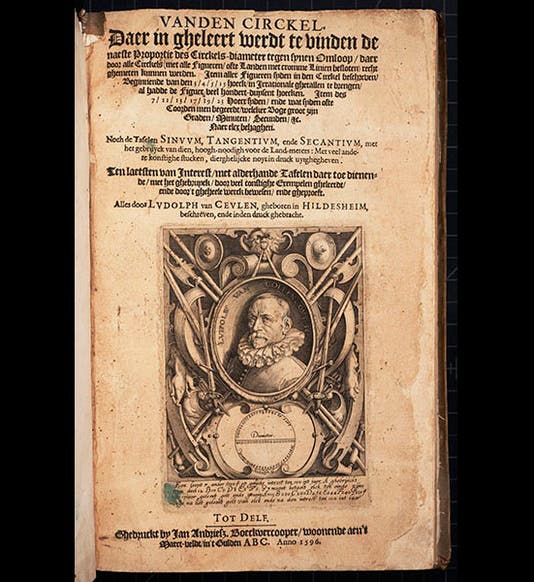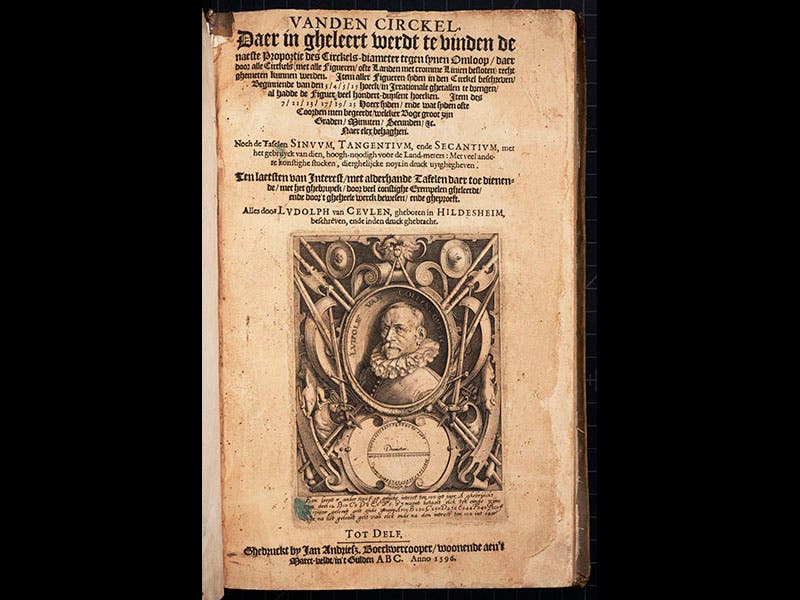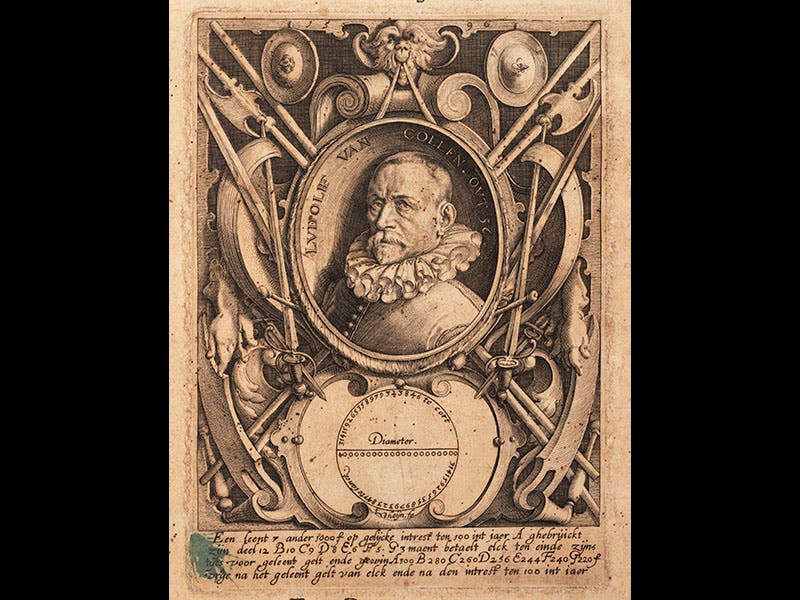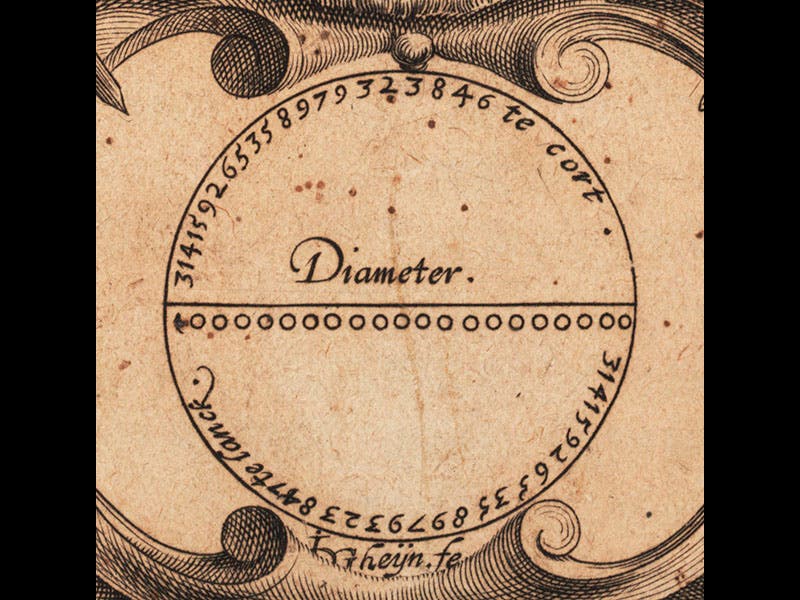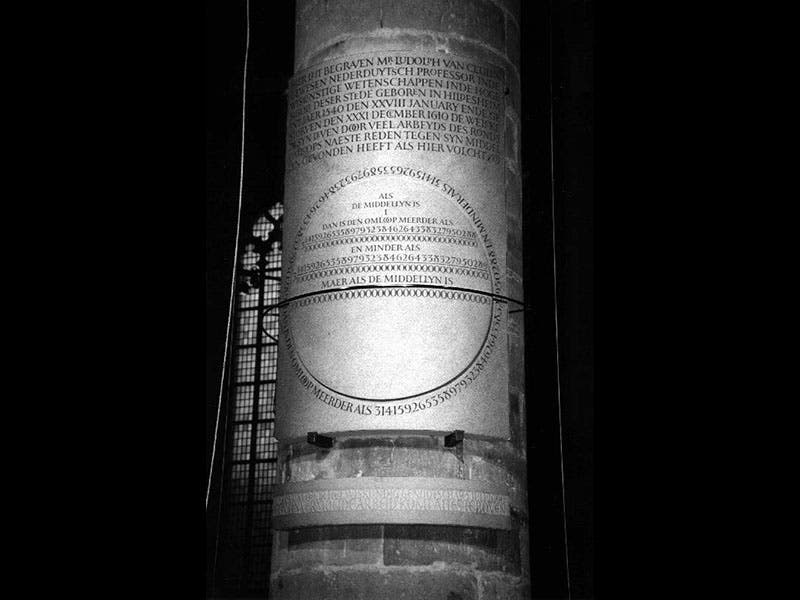Scientist of the Day - Ludolph van Ceulen
Ludolph van Ceulen, a Dutch mathematician, died Dec. 31, 1610, at the age of 70. In the late sixteenth century, especially in the Netherlands, there was a revival of interest in the works of Archimedes. Van Ceulen was a part of this Archimedean renaissance, and early in his career, he read a translation of Archimedes' treatise, Measuring the Circle. In this work, Archimedes estimated the value of pi by calculating the circumferences of polygons that just fit inside and outside the circle, reasoning (correctly) that the circumference of the circle must lie between those two values. Using polygons of up to 128 sides, Archimedes found that pi must lie between (using modern notation) 3.141 and 3.142.
Van Ceulen found a way to increase the number of sides of the inscribed polygons from 128 to well into the millions, and he initially found a value of pi accurate to 20 decimal places. This number was engraved just below his portrait on the title page of his first book, Van den Circkel (1596; see first image above, with details in second and third images). In Archimedean style, the inscription says that pi must lie between 3.14....846 (at the top) and 3.14...847 (bottom). By the time of his death, van Ceulen had extended the value to 35 places, and he requested that the two limiting numbers be carved on his gravestone. The tombstone disappeared soon after his death in 1610, but it was "restored" (i.e., completely rebuilt from scratch) in 2000, and can be seen in St. Peter's Church in Leiden (fourth image). On the slight possibility that someone would like to know how he did, this was his lower limit: 3.14159265358979323846264338327950288, the number at the top of the circle on his tombstone.
In the Netherlands, pi is often referred to as the “Ludolphine number", after van Ceulen. We have four van Ceulen works in the Library, and two of those have the pi-portrait vignette on the title page: the original Van der Circkel of 1496, and a Latin translation of 1619 (fifth image).
Dr. William B. Ashworth, Jr., Consultant for the History of Science, Linda Hall Library and Associate Professor, Department of History, University of Missouri-Kansas City. Comments or corrections are welcome; please direct to ashworthw@umkc.edu.

